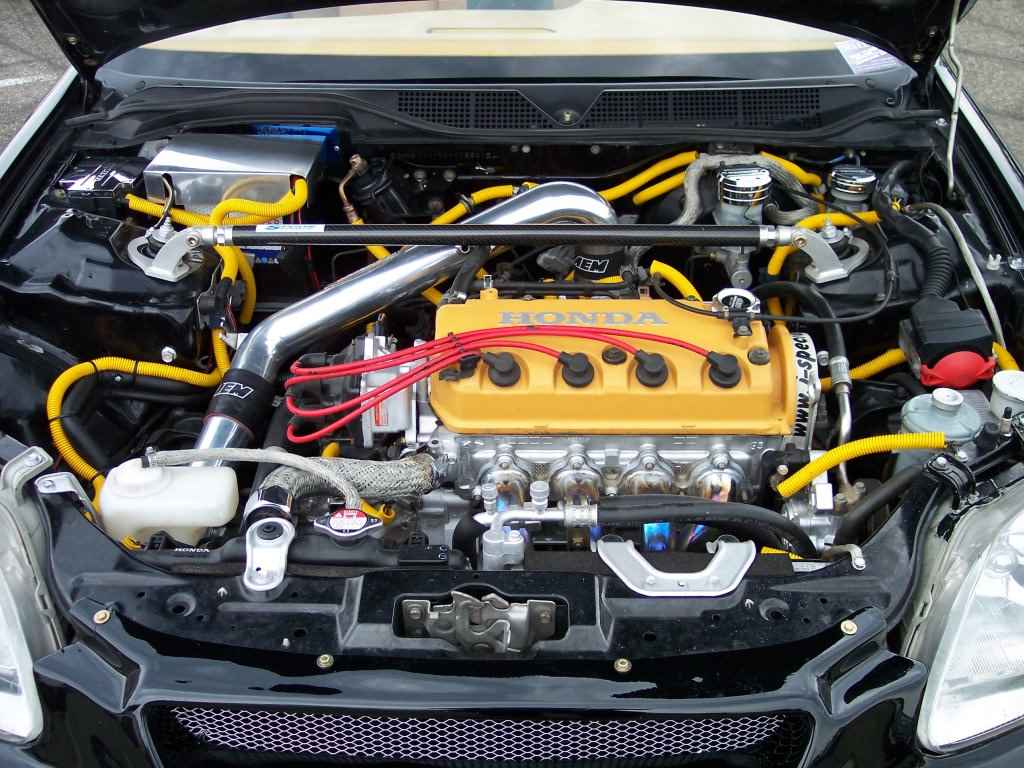9000+ Cashless Garages
96% Claims Settled (FY 24-25)

9000+ Cashless Garages
96% Claims Settled (FY 24-25)



The difference between an SOHC and a DOHC engine has always fascinated car fans and potential buyers. Engine types differ in how they influence performance, fuel efficiency, and maintenance requirements.
SOHC has a single camshaft cylinder head, while DOHC has two. Having more than one camshaft affects the operation of the valves. An overview of the difference between SOHC vs DOHC would help one decide which engine type best suits one's driving needs and preferences.


A single overhead camshaft (SOHC) is an internal combustion engine configuration used in the automobile range. In this configuration, one single camshaft is placed above the cylinder head to open and close the inlet and exhaust valves.
It controls valve timing, which makes an engine work more efficiently. Because it is less complex, efforts have been made to allow its use in inexpensive vehicles.
The acronym DOHC stands for "Dual Overhead Camshaft," an advanced engine configuration with two camshafts above the cylinder head. This design has two camshafts above the cylinder head: one for the intake valves and the other for the exhaust valves.
This ensures better performance. Because such a design gives better performance and control over the intake and exhaust valves, it finds applications mainly in high-performance vehicles.
The SOHC and DOHC vary in design, performance, and efficiency to meet some requirements. Here's a breakdown of their key differences:
| Parameter | SOHC | DOHC |
| Valve Arrangement and Efficiency | One camshaft operates the intake and exhaust valves, typically two per cylinder. This simpler arrangement places a priority on reliability. | Two camshafts independently control intake and exhaust valves, typically four valves per cylinder, maximising airflow and efficiency. |
| Fuel Efficiency Comparison | Simpler design and fewer moving parts increase fuel efficiency, especially for routine driving patterns. | Though less fuel efficient, the car's complex design is optimised to deliver peak performance under high-demand driving. |
| Noise and Sound Levels | Typically noisier due to fewer precision control features but manageable for standard users. | While noisy, it often produces a more refined sound, which is appreciated in high-performance engine applications. |
| Maintenance and Cost | Fewer components make maintenance easier and cheaper, appealing to budget-conscious owners. | Complex structures and additional parts increase repair and maintenance costs over time. |
| Engine Size and Weight | The compact size makes the engine lighter, to the advantage of vehicles requiring smaller and more cost-effective engines. | Larger size and weight provide stability but add to the vehicle's overall weight and affect handling. |
| Power Output | Enough power for normal driving but not punchy enough for high-speed applications. | It has a much higher power output and is best suited for sports cars or performance-oriented usage. |
| Durability | A simplistic design with fewer moving parts improves durability and diminishes the prospect of frequent repair. | Increased complexity and stress on components may result in more frequent wear and tear, affecting long-term durability. |
| Valve Timing Control | It provides the basic timing control, which is less precise but is suitable for standard applications. | Advanced timing control provides better performance tuning and efficiency under varying conditions. |
SOHC engines are less complicated and highly efficient but have their drawbacks. Here's a quick overview:
| Advantages | Disadvantages |
| Simpler design that makes maintenance easier. | Reduced valve control leads to lower performance at higher RPMs. |
| Easier to manufacture and maintain. | Generally, two valves per cylinder, restricted airflow. |
| A compact and light design, which is well adapted for smaller vehicles. | Less power output compared with DOHC. |
| A quieter operation overall. | Not ideal for race cars or fast-moving vehicles. |
DOHC engines provide exceptional performance and efficiency but come with certain drawbacks, including:
| Advantages | Disadvantages |
| Allows for four valves per cylinder, improving airflow and combustion. | Complex design leads to higher manufacturing costs. |
| Offers superior power output and performance. | Requires more frequent and expensive maintenance. |
| Precise valve timing enhances fuel efficiency and emissions control. | Heavier and larger, which may affect vehicle dynamics. |
| Suitable for high-speed and high-performance vehicles. | Increased engine noise due to advanced valve operations. |
City living requires efficiency, flexibility, and easy servicing. Selecting a proper engine will give an individual an advantage over all other alternatives regarding finance and comfort.
SOHC Engines: This engine performs moderately in city traffic and provides adequate performance for moderate speeds. Thus, it is recommended for urban traffic. It is simpler in design, cheaper, and has lower maintenance costs.
DOHC Engines: They are not very good in stop-and-go traffic circumstances. The added complexity in the design results in a higher cost of maintenance and manufacture. They provide excessive power, which cannot be realised under city-driving conditions.
When comparing the two, one should consider the driver's needs. While both have their respective advantages, their suitability will depend on how they are used daily and whether performance and fuel-economy standards are met.
Stable: SOHC engines deliver smoother and quieter rides, ideal for urban commutes and day-to-day use.
Cheaper to Maintain: Being less complicated and with fewer components, SOHC engines are less expensive.
Fuel Efficiency: SOHC engines, planned and designed with a fuel efficiency strategy as a priority, will tend to be more economical and, hence, consume less fuel.
More Performance: DOHC engines incorporate more valves, improving the air-fuel mixture and exhaust intake.
Improved Acceleration: With their degree of adjustment and enhanced power delivery, DOHC engines are the choice for anyone who wishes to accelerate.
Advanced Technology: High-tech DOHC engines regularly come with features such as variable valve timing to capture the interest of motorsport enthusiasts.
Numerous experts have provided their opinions concerning the performance of both engines. These are some examples of opinions derived from several sources to consider:
The CarParts.com report highlights that DOHC engines perform superiorly, especially in sports and luxury vehicles.
According to HDFC ERGO, SOHC engines are better for consumers who prioritise economy and simplicity at the expense of performance.
To determine the type of engine in your vehicle, whether it is a single overhead camshaft, SOHC, or a dual overhead camshaft, DOHC, here are some methods:
DOHC engines normally possess a broader valve cover, presumably ranging through the middle for the spark plug wires.
The SOHC engines usually exhibit narrower valve coverage without this groove.
You can easily spot DOHC engines by the presence of two round spots on the timing belt cover.
On the other hand, SOHC engines typically feature a single circular impression because only one camshaft is present.
The two spark plugs are typically aligned along the centre of the head in a DOHC engine.
SOHC engines, however, generally have spark plugs placed at the rear or front of the engine.
SOHC and DOHC engines differ in how they balance power and environmental issues. SOHC is likely to generate better fuel consumption because it's simpler to design, making it less likely to degrade the environment in an urban setting. These also last longer and are efficient over time due to having fewer moving parts.
Although DOHC engines are more powerful, they may use more fuel than SOHC engines. However, variable valve timing and direct injection have improved their efficiency and reduced emissions to comply with current environmental standards.
Both these engines have come a long way, having to comply with the increased emission norms in India and high-efficiency charging solutions, ensuring that carbon footprints are reduced.
SOHC and DOHC engines power many cars in India, ranging from daily commuters to performance enthusiasts. Here is the expanded list:
| Engine Type | Car Model |
| SOHC | Honda Amaze |
| Tata Altroz | |
| Hyundai Grand i10 Nios | |
| Renault Kwid | |
| Mahindra Bolero | |
| Maruti Suzuki Dzire | |
| Toyota Glanza | |
| Honda City (1.5L Petrol) | |
| Maruti Suzuki Swift | |
| DOHC | Hyundai i20 |
| Kia Seltos | |
| Toyota Innova Crysta | |
| Mahindra Thar | |
| Hyundai Creta | |
| Tata Harrier | |
| Jeep Compass | |
| MG Hector | |
| Skoda Octavia |
In conclusion, your choice will depend on your needs and driving modes. The engines differ in their unique characteristics. SOHC engines are efficient and simple, while DOHC engines excel in speed and power.
Understanding these differences can help you decide what you intend to use the vehicle for, consider environmental impact considerations, and determine your driving preferences.